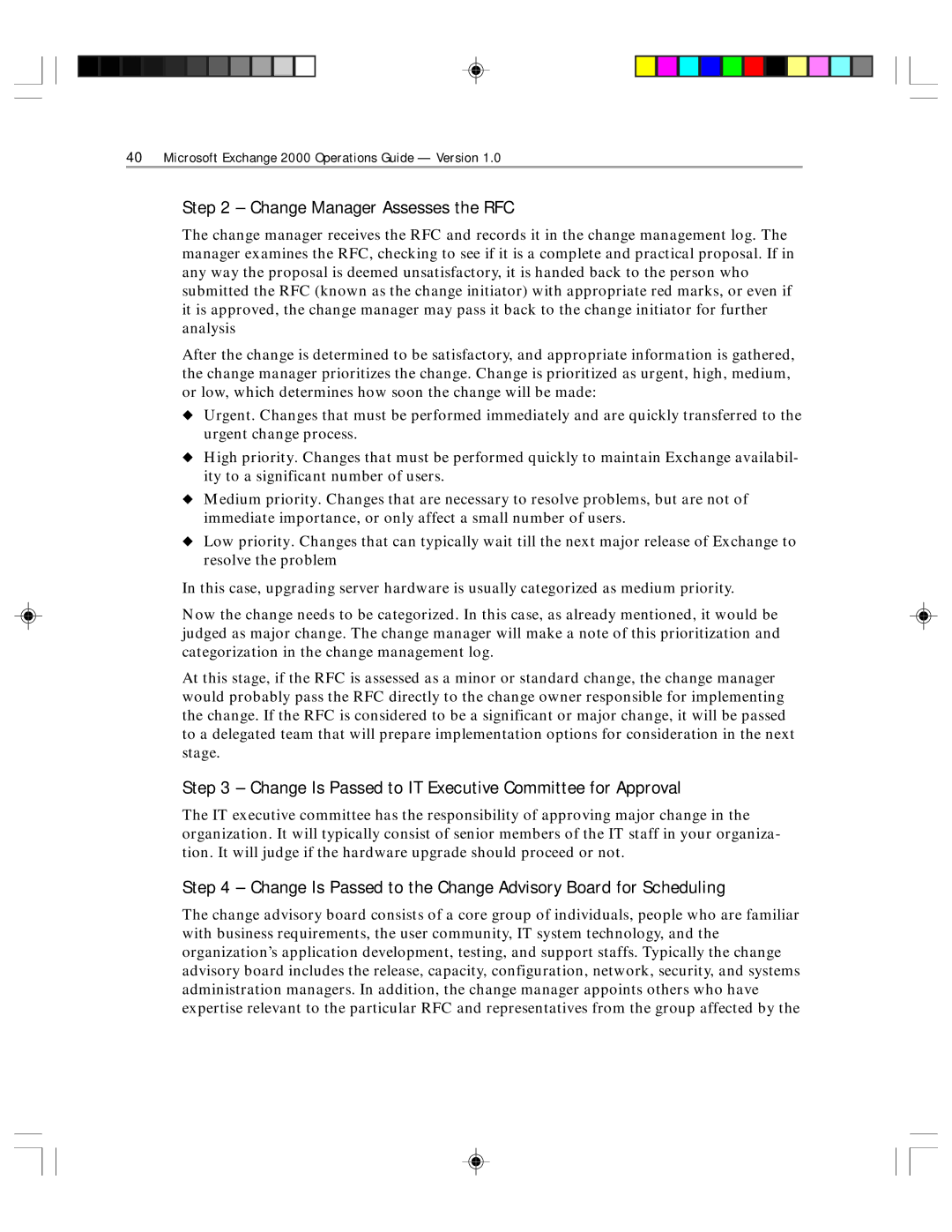
40Microsoft Exchange 2000 Operations Guide — Version 1.0
Step 2 – Change Manager Assesses the RFC
The change manager receives the RFC and records it in the change management log. The manager examines the RFC, checking to see if it is a complete and practical proposal. If in any way the proposal is deemed unsatisfactory, it is handed back to the person who submitted the RFC (known as the change initiator) with appropriate red marks, or even if it is approved, the change manager may pass it back to the change initiator for further analysis
After the change is determined to be satisfactory, and appropriate information is gathered, the change manager prioritizes the change. Change is prioritized as urgent, high, medium, or low, which determines how soon the change will be made:
◆Urgent. Changes that must be performed immediately and are quickly transferred to the urgent change process.
◆High priority. Changes that must be performed quickly to maintain Exchange availabil- ity to a significant number of users.
◆Medium priority. Changes that are necessary to resolve problems, but are not of immediate importance, or only affect a small number of users.
◆Low priority. Changes that can typically wait till the next major release of Exchange to resolve the problem
In this case, upgrading server hardware is usually categorized as medium priority.
Now the change needs to be categorized. In this case, as already mentioned, it would be judged as major change. The change manager will make a note of this prioritization and categorization in the change management log.
At this stage, if the RFC is assessed as a minor or standard change, the change manager would probably pass the RFC directly to the change owner responsible for implementing the change. If the RFC is considered to be a significant or major change, it will be passed to a delegated team that will prepare implementation options for consideration in the next stage.
Step 3 – Change Is Passed to IT Executive Committee for Approval
The IT executive committee has the responsibility of approving major change in the organization. It will typically consist of senior members of the IT staff in your organiza- tion. It will judge if the hardware upgrade should proceed or not.
Step 4 – Change Is Passed to the Change Advisory Board for Scheduling
The change advisory board consists of a core group of individuals, people who are familiar with business requirements, the user community, IT system technology, and the organization’s application development, testing, and support staffs. Typically the change advisory board includes the release, capacity, configuration, network, security, and systems administration managers. In addition, the change manager appoints others who have expertise relevant to the particular RFC and representatives from the group affected by the
